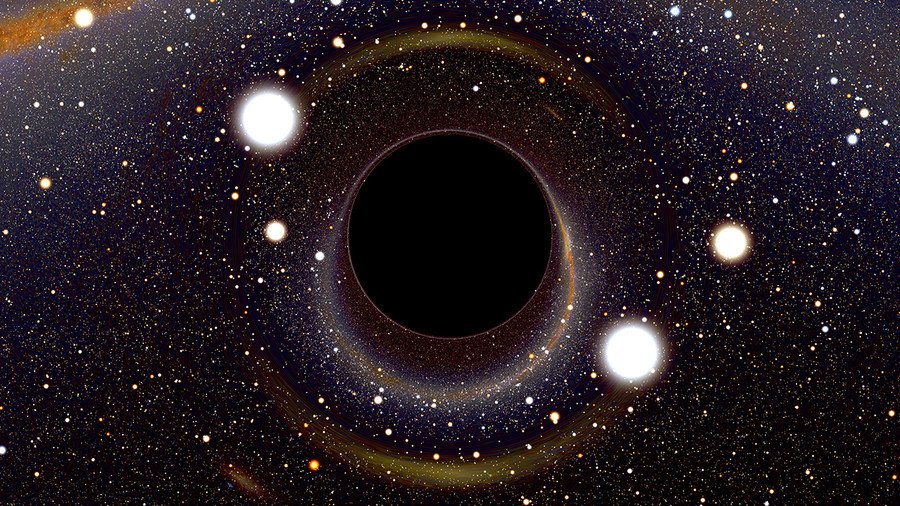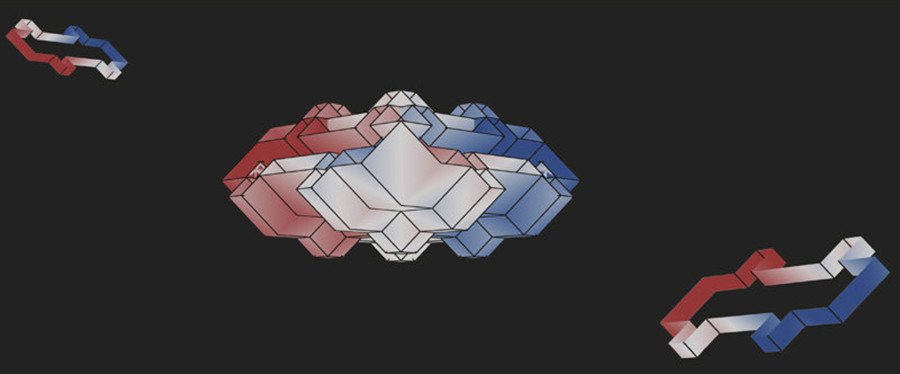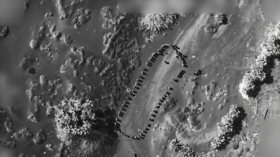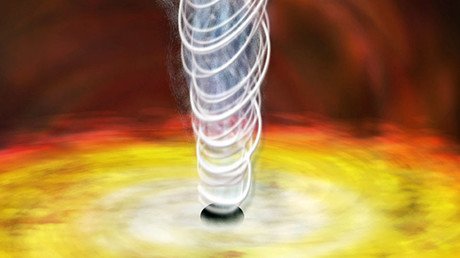The 4th dimension, but not as we know it: Scientists bend rules to catch glimpse of unknown

Two separate teams of scientists have bent the rules of physics to catch a glimpse of evidence on something which, technically, we shouldn’t be able to perceive: a fourth spatial dimension.
Everyone is aware of our standard three dimensions of space and one dimension of time, but the two teams, one based in the US and the other in Europe, have shown the existence of a fourth spatial dimension by employing some head-melting quantum mechanics and a bit of laser trickery.
The teams created two custom-designed, two-dimensional experiments to generate an instance of the quantum Hall effect, which restricts the movement of electrons, allowing us to both perceive and measure them in a unique way. The quantum hall effect points to the existence of a fourth spatial dimension. Researchers who studied the effect won the 2016 Nobel Prize for Physics. The quantum Hall effect usually manifests itself in the boundary between two materials, where electrons can only move in two dimensions.
Everything we see and feel may in fact be be part of a vast illusion- study #RTBest2017https://t.co/XGmu76Gj2cpic.twitter.com/CxqlilPy9b
— RT (@RT_com) December 29, 2017
When a magnetic field is produced perpendicular to the 2D plane it greatly changes the behavior of electrons which flow through it, which can further be manipulated by reducing the temperature and increasing the voltage within the environment. The larger the field and the greater the voltage, the more of a role quantum mechanics plays.
"Physically, we don't have a 4D spatial system, but we can access 4D quantum Hall physics using this lower-dimensional system because the higher-dimensional system is coded in the complexity of the structure," Mikael Rechtsman from Penn State University told Gizmodo.
"Maybe we can come up with new physics in the higher dimension and then design devices that take advantage the higher-dimensional physics in lower dimensions."
The European-based team supercooled atoms close to absolute zero, which were then placed in a 2d lattice created using lasers, before ‘exciting’ the atoms using additional lasers to get them moving again.
The US-based team took a different approach by beaming a laser through a block of glass to simulate the effect of an electric field on charged particles, as required to produce the quantum Hall effect.

"I think that the two experiments nicely complement each other," one of the European researchers, Michael Lohse from the Ludwig-Maximilians University in Germany, told Gizmodo.
Put simply, as we perceive it, 3D objects cast 2D shadows, so it follows that 4D objects would cast 3D shadows, even if we can't actually see the 4D object itself. Approximately two decades ago, boffins proved mathematically that fourth dimensional movement was possible but such theories were relegated to the realm of science fiction.
"At the time, however, that was more like science fiction," said Oded Zilberberg as cited by Eureka Alert, "as actually observing something like that in an experiment seemed impossible – after all, physical space only has three dimensions."
Confirmed! DARPA-funded scientists prove ‘#quantum teleportation’ and successfully test out tech https://t.co/y32CQ98m4ypic.twitter.com/wRLAZD0kTj
— RT (@RT_com) September 20, 2016
By using a topological 'pump' to manipulate the 2D environments in the experiments, Zilberberg postulated that we can, theoretically at least, turn a two-dimensional system into a four-dimensional one.
"Right now, those experiments are still far from any useful application," Zilberberg admits.
However, as such research continues, it could afford us unique perspectives on current fields of study. One such instance would be in materials science.
Quasicrystals in metallic alloys have no periodic structure in three dimensions but do in higher, theoretical ones such as the fourth dimension. Such quasicrystals could one day greatly reinforce steel, develop improved heat insulation, and provide new materials which convert heat to electricity.
They could also be used as solar absorbers for power conversion in the renewable energy industry as well providing low-friction alternatives to current artificial bone repair and prostheses applications in the medical science field.















